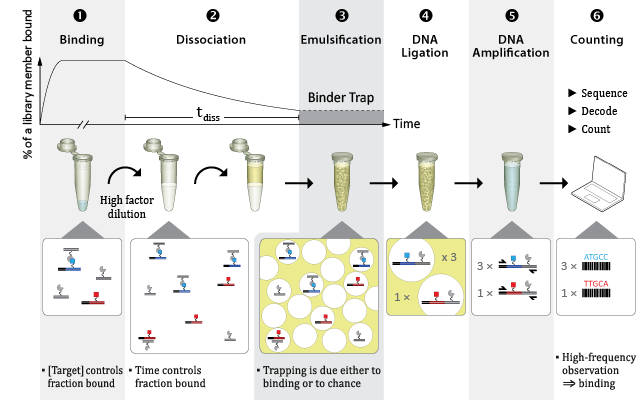Binder Trap Enrichment®(BTE)
BTE is a homogeneous screening method for DELs which uses water-in-oil emulsion technology to isolate individual ligand-target complexes. Ligands to a protein target are identified by trapping binding pairs (DNA-labelled protein target and DEL ligand) in emulsion droplets during dissociation dominated kinetics. Once trapped, the target and ligand DNA are joined by ligation, thus preserving the binding information.
Hereafter, BTE is essentially a counting exercise: information on binding events is deciphered by sequencing and counting the joined DNA – selective binders are counted with a higher frequency than random binders. This is possible because random trapping of target and ligand is “diluted” by the high number of compartments in the emulsion.
Specific benefits of BTE
- High fidelity – low false positive rate
- Generally applicable across disease areas and target classes
- Applicable to difficult targets (including PPIs and protein complexes)
- Target-ligand residence time based discovery (unique capability)
- Affinity based discovery
- Instant SAR
- Instant selectivity – multiplexed screening of target and anti-targets (unique capability)
- Low amounts of protein required (μg)
Binder Trap Enrichment - Methodology and Principles

- Equilibrium binding between yR library and protein target
- Dissociation dominated kinetics initiated by high
factor dilution - Trapping of binding complexes in droplets by emulsification
- Preservation of binding information by DNA ligation
- DNA amplification by PCR
- Hit identification by DNA sequencing allowing decoding
and counting